At 12,000 Feet, this Skydiver Had a Seizure. What His Instructor Did Next Saved His Life.
Updated: May 15, 2017
Fly_Fast/Getty Images Christopher Jones is packed tightly into a Cessna 182 with a dozen or so other trainee skydivers as
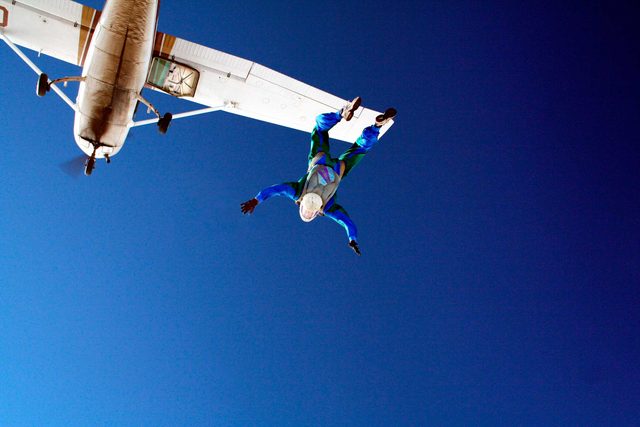
Christopher Jones is packed tightly into a Cessna 182 with a dozen or so other trainee skydivers as they fly over the Australian countryside just south of his hometown of Perth. It’s shortly after 4 p.m., and this will be Jones’s fifth jump in his accelerated freefall training program and his first time jumping solo, without being tethered to an instructor.
As the plane climbs through the clear, crisp November sky, Jones, 22, goes over the day’s procedure in his mind. His heart is racing, but he’s confident that he’s ready for his first solo jump. Stay calm, he tells himself, as he sits in the back of the plane mentally ticking off the maneuvers he has to make.
Just after the plane reaches 12,000 feet, a green light begins flashing on the wall directly in front of him, a signal that the pilot has given his OK for the jump to proceed. Though Jones will be managing his parachute by himself, he will not be alone. Veteran parachutist Sheldon McFarlane, who has 25 years and some 10,000 jumps under his belt, will be right behind. McFarlane slides open the plane’s side door and motions for Jones to take up the ready position near the door.
Although he is protected by a helmet, goggles, his jumpsuit, and two parachutes (a main and a reserve), Jones winces as he feels the cold air rush into the plane. The whipping wind is so noisy that he can hear nothing but his own heartbeat. He is nervous but focused on McFarlane, who will guide him through a prescribed set of maneuvers using hand signals and radio commands via the headsets they both wear. McFarlane will also film the jump so that Jones can watch it later.
As Jones clambers into position, holding on tightly to a rail above the open door to brace himself, he begins the pre-jump cadence he has learned: “Check in,” he says with a thumbs-up to McFarlane, indicating that he’s ready to jump.
“OK,” answers McFarlane with a return thumbs-up.
Fighting the strong buffeting winds, Jones looks down at the green-and-brown checkerboard pattern of the countryside. In the distance, he sees the bright blue of the Indian Ocean.
“Sky!” he shouts, indicating that he knows in which direction to jump and has gotten his balance. McFarlane gives him another thumbs-up.
Today’s solo skydiving jump is the culmination of a lifelong dream. Jones fell in love with flying after going out in his uncle’s small plane. He loved it so much, he’d planned to become a pilot when he grew up. But his hopes were dashed when he was diagnosed with epilepsy at age 12. Doctors told him that his condition would prevent him from ever getting a pilot’s license.
Years later, after skydiving in tandem with an instructor in Europe, he fell in love with the sport. Free-falling through the sky was exhilarating, almost like flying. He was hooked. He told his parents, “If I can’t fly a plane, I’ll jump out of one instead.”
As a rule, epileptics aren’t allowed to skydive alone. But Jones hadn’t had a seizure in more than six years, so his doctor gave him a letter stating that he was fit to sign up for lessons. The recent university graduate sailed through classes at the WA Skydiving Academy in Jandakot, a suburb of Perth.
“A star pupil,” one of the instructors, Donna Cook, called Jones. Other staffers agreed. Jones’s tandem jumps, for which he was tethered to an instructor, had gone off without a hitch. He was ready to solo.
So today, at last, he’s about to step out of an airplane by himself. All told, the jump should take about two minutes, from leaving the shelter of the plane to landing on the ground some 12,000 feet, or two miles, below. This is how it went:
12,000 Feet
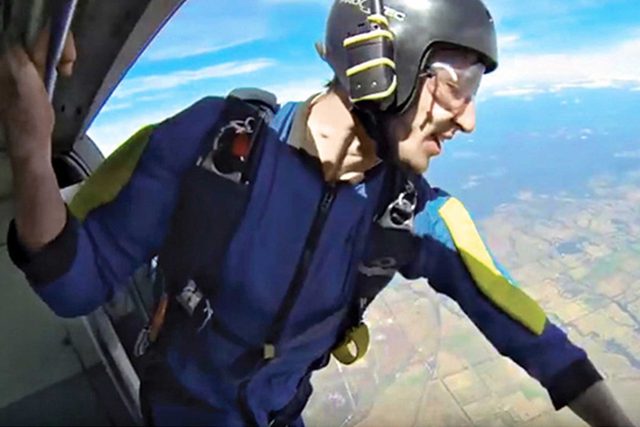
As Jones prepares to jump, he missteps and nearly slips out of the Cessna. That’s a bit messy, thinks McFarlane, though this kind of stumble is not unusual for first timers. But Jones catches his balance and turns his back to the bright sky, grabs onto the hanging bars on either side of the door, and arches his back into the jump position. He shouts to McFarlane, “Up! Down! Hard arch!”—skydiving lingo for “Ready, set, go!”—and leaps out of the plane.
Jumping just seconds behind Jones, McFarlane reaches him and is relieved to see that he has recovered from his clumsy exit and is free-falling in the perfect “box man” position: belly to the ground, his body arched upward with arms and legs spread for stability and control. Both skydivers are free-falling and will continue to plunge without their chutes until they reach 5,000 feet, in less than a minute. (It typically takes 10 seconds to free-fall the first 1,000 feet, then five and a half seconds per 1,000 feet after that; skydivers plunge at a speed of approximately 120 miles per hour.)
McFarlane points to the altimeter on his wrist. Jones follows his cue to check his own. So far, so good, thinks McFarlane. He flashes a thumbs-up.
9,000 Feet
As both jumpers free-fall, McFarlane signals Jones to begin an aerial left-hand turn. The jumper starts to make the turn but suddenly stops and is buffeted to the right. Not good, thinks McFarlane. Jones continues to drift right as McFarlane wonders, What the heck are you doing?
8,000 Feet
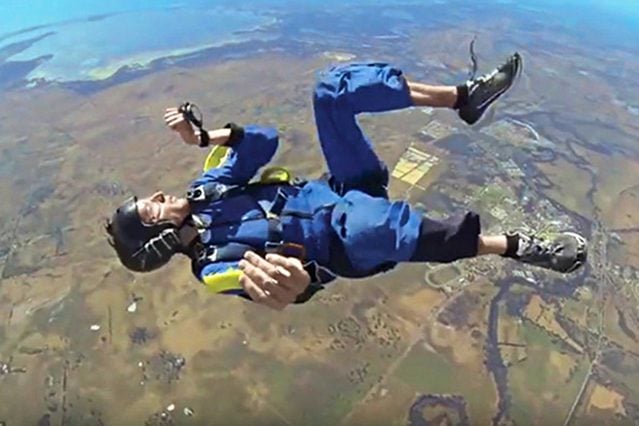
Jones fails to recover from his missed left turn and is not following McFarlane’s other commands. The veteran instructor quickly realizes something is wrong.
Suddenly Jones’s knees come up into his chest, and he flips over like a turtle onto his back. His arms flail as he falls through the sky. He’s losing it, thinks McFarlane.
Come on, Christopher, he says to himself. Right yourself!
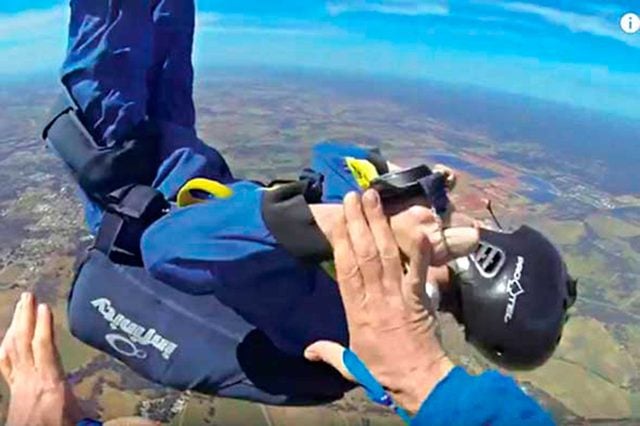
7,000 Feet
Jones continues to fall, spinning helplessly on his back. McFarlane has seen other first timers suffer from sensory overload and become incapacitated. He thinks this may be what Jones is experiencing. However, that usually occurs on one of a student’s first tandem jumps, and Jones completed his without a problem. But this is a solo jump, and, of course, the stakes are higher: Jones’s life is on the line.
“Come on, Christopher!” McFarlane shouts out loud this time. Unaware that his student has epilepsy, he doesn’t know that Jones is suffering a seizure and has blacked out. He is unconscious, unable to open his parachute, and falling as fast as a speeding race car to the ground below.
6,000 Feet
Jones continues to plummet, spinning and spiraling out of control, now with his head pointed downward. McFarlane knows he has to act fast. Although Jones, like every WA Skydiving student, is fitted with an Automatic Activation Device (AAD) that will automatically open his main parachute at 2,000 feet above the drop zone, McFarlane realizes that would give the first-time solo jumper little time to regain control. He could easily fly into a tree, river, or power line or, worse, break his neck in an uncontrolled landing. Also, McFarlane knows that AADs have failed on occasion.
5,000 Feet
Beep, beep, beep. McFarlane’s preset audible altimeter begins beeping in his ear, signaling that it’s time to deploy his main chute for a safe landing. He ignores it as he makes the decision to free-fall down to Jones, grab him, and open his parachute for him. McFarlane lifts his chin and swoops his arms back, speeding toward his student like a hawk pursuing its prey. It’s a risky maneuver. He has to avoid becoming entangled if Jones’s chute opens in the wrong direction. In that worst-case scenario, both men could fall to their deaths.
McFarlane soon realizes that he’s coming in too fast. Afraid he will crash into Jones or that Jones might suddenly pull the rip cord and entangle both of them, he aborts the effort. Jones is still on his back, unconscious, and falling uncontrollably.
4,500 Feet
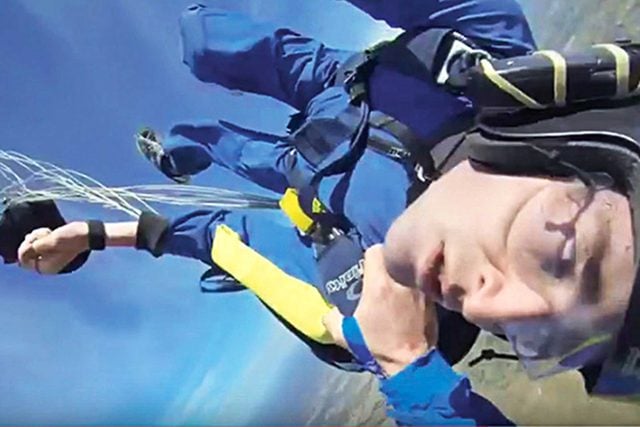
BEEP, BEEP, BEEP. McFarlane’s altimeter alarm is beeping even louder as he pulls on both toggles to slow his chute, a step known as flaring, to buy him a few more seconds as he descends. But he’s running out of time to deploy his own parachute. Even highly skilled skydivers don’t open their chutes any lower than 2,000 feet, and McFarlane will reach that height in just 14 seconds.
Still, he decides to dive again to try to reach Jones. This time he swoops like Superman and manages to grab Jones’s harness and roll his body sideways. It’s crucial to get him in the proper position before pulling the rip cord, or his chute could entangle them both. Holding tightly to the harness with his right hand, McFarlane uses his left to grab Jones’s chute handle and then pulls it hard. The main parachute billows out and up, swinging Jones around so that he is sitting upright in the harness.
“Thank God!” thinks McFarlane as the force of air filling the chute sends Jones upward into the sky. But Jones is still unconscious, still unaware that he is falling to the earth, though more slowly now, beneath his billowing yellow canopy. A crash landing could easily kill him.
4,000 Feet
McFarlane opens his own chute, then executes a series of midair turns to speed up his descent.
During any jump, an instructor is stationed on the ground to watch the action and radio commands to the jumpers. Today’s drop zone safety officer, Donna Cook, has been radioing Jones but getting no response. When his chute opens, she is relieved. “Way to go!” she tells him.
But Cook’s relief quickly turns to concern as she again gets no response and sees Jones drifting far off course. She radios him again: “Keep yourself upwind of the target. Turn right.” As Jones continues to move away from the drop zone, Cook realizes something is seriously wrong.
3,500 Feet
Cook watches Jones fly farther off course. Maybe he has blacked out or become incoherent. Maybe his radio has failed. Whatever the problem is, Jones isn’t following any of her commands. But she continues to guide him on the radio, praying that he can somehow hear her: “Turn right, Chris! Turn right!”
3,000 Feet
Slumped over in his parachute, Jones regains consciousness. He feels as though he is waking from a deep sleep. But as he comes to, he sees the ground beneath him coming closer and closer. He lifts his head and is amazed to discover that he is drifting down to earth under an opened parachute canopy.
“How the … ?” he wonders. He realizes he has blacked out, and his skydiving training instantly kicks in. He checks his altimeter, which reads 3,000 feet. The last time he remembers checking it was at 9,000 feet, following McFarlane’s instructions. He doesn’t know how long he has been out, but he knows he has to act fast.
Check the canopy, he tells himself. He looks up to see that it is open and none of his lines are twisted.
Orient yourself, he tells himself next, and he looks for the drop zone, a white fabric arrow far off to the west. Before he can run through the other landing procedures, he hears the one-way radio in his helmet crackle.
“Chris! Chris!” he hears Cook say. “Fly toward the ocean. To your right!” He sees that he is far off course and tugs hard on his steering handle.
2,000 Feet
As the wind helps carry him, Jones pulls on the parachute toggle to direct him closer to the drop zone, which he can now see beneath him. He’s back on course. Seeing Jones finally responding to her commands, Cook is ecstatic. “Great!” she radios him. “You’re doing great!
“Turn your back to the ocean,” she says. Jones follows her directives.
“That’s it! You’re doing it!” Cook tells him. Afraid of losing contact with him again, she keeps radioing Jones commands.
1,000 Feet
McFarlane, who has already landed, shouts to Cook, “This was one of the worst stage-five jumps I’ve ever seen!” He still has no idea that Jones had a seizure. (Although Jones and his doctor can’t say for sure why he had a seizure that day, a lack of oxygen at high altitudes and stress can bring one on.)
300 Feet
Jones prepares to land close to the drop zone. As he nears the ground, he mentally runs through the steps he has learned to touch down safely. Like a veteran skydiver, he flares his chute moments before his feet hit the ground running. Perfect!
Cook keeps up her radio chatter. After Jones executes a faultless two-point landing and begins gathering up his chute, she is close to tears.
“You did great!” she radios to Jones.
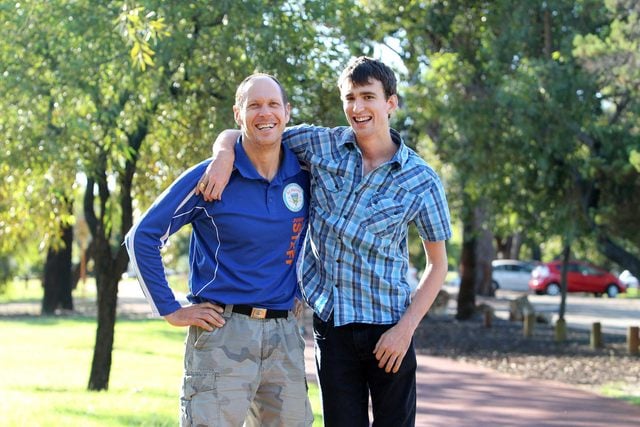
The first thing Jones does upon landing is to go to McFarlane and hug him tightly.
“Thank you very much,” he says, explaining that he suffered an epileptic seizure. “You just saved my life.”
For his quick thinking and courageous actions, McFarlane was awarded the Gold Cross from the Royal Life Saving Society, Western Australia. Although Jones hasn’t had a seizure since that day, he says his skydiving days are over.